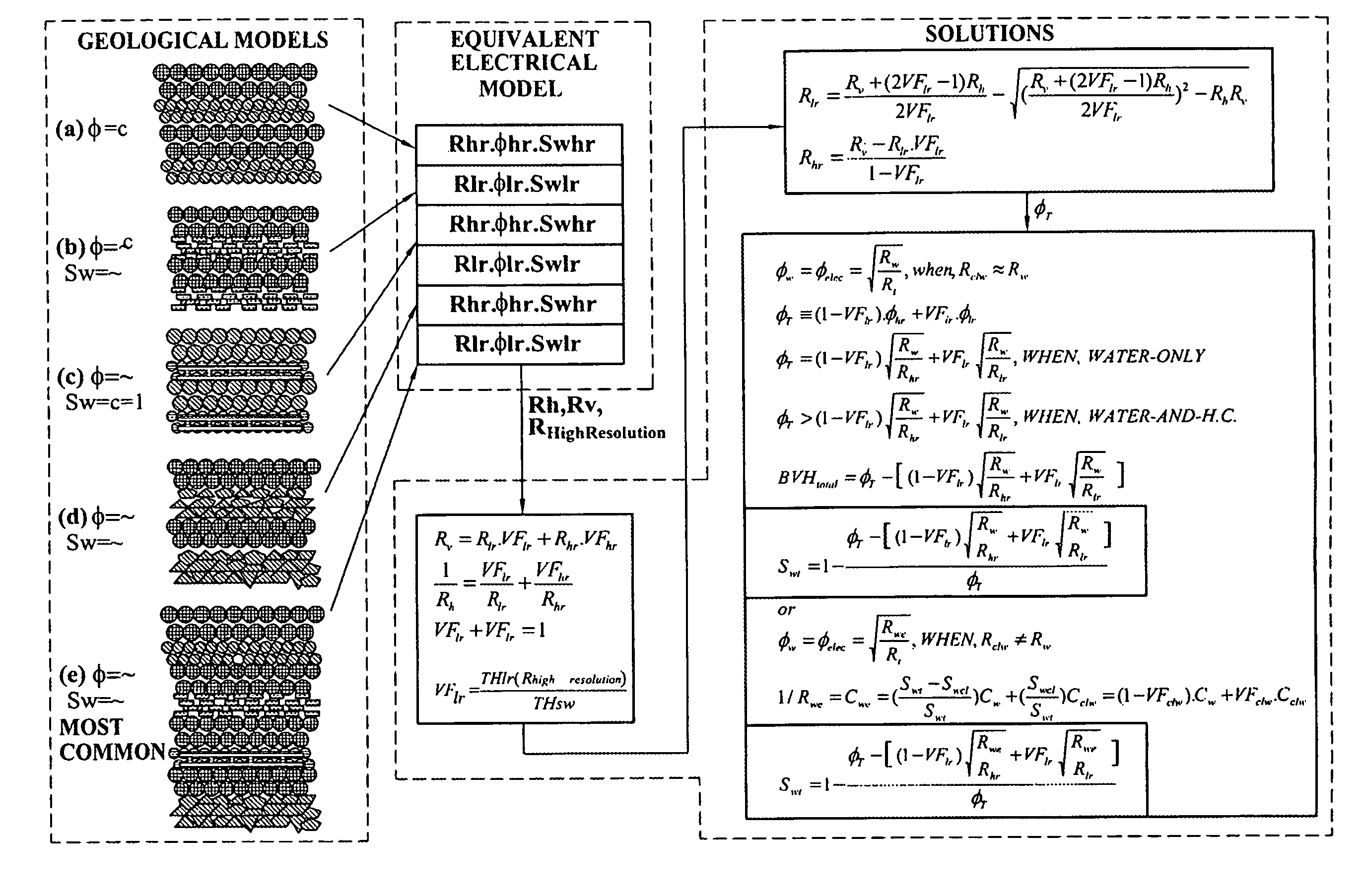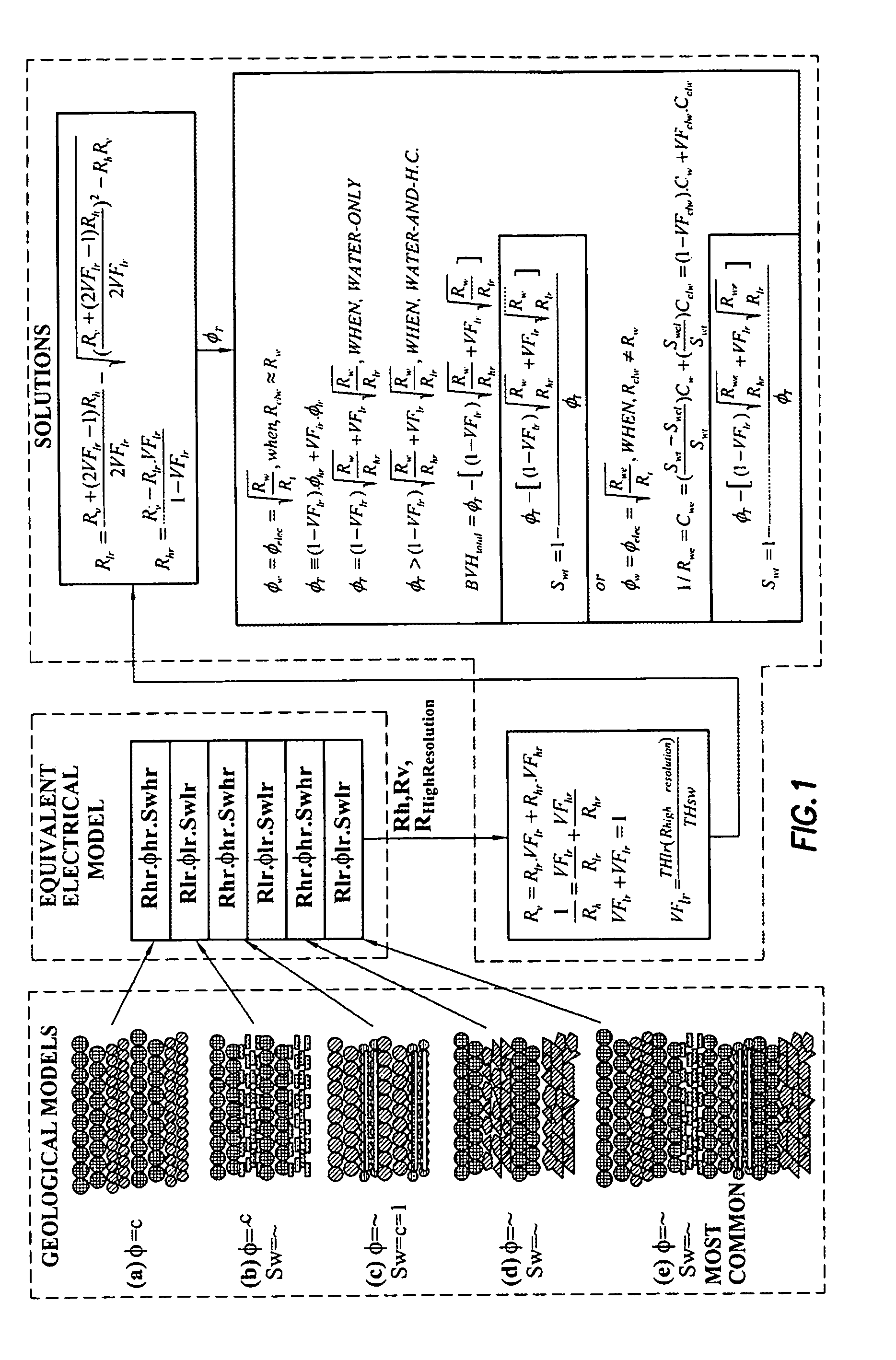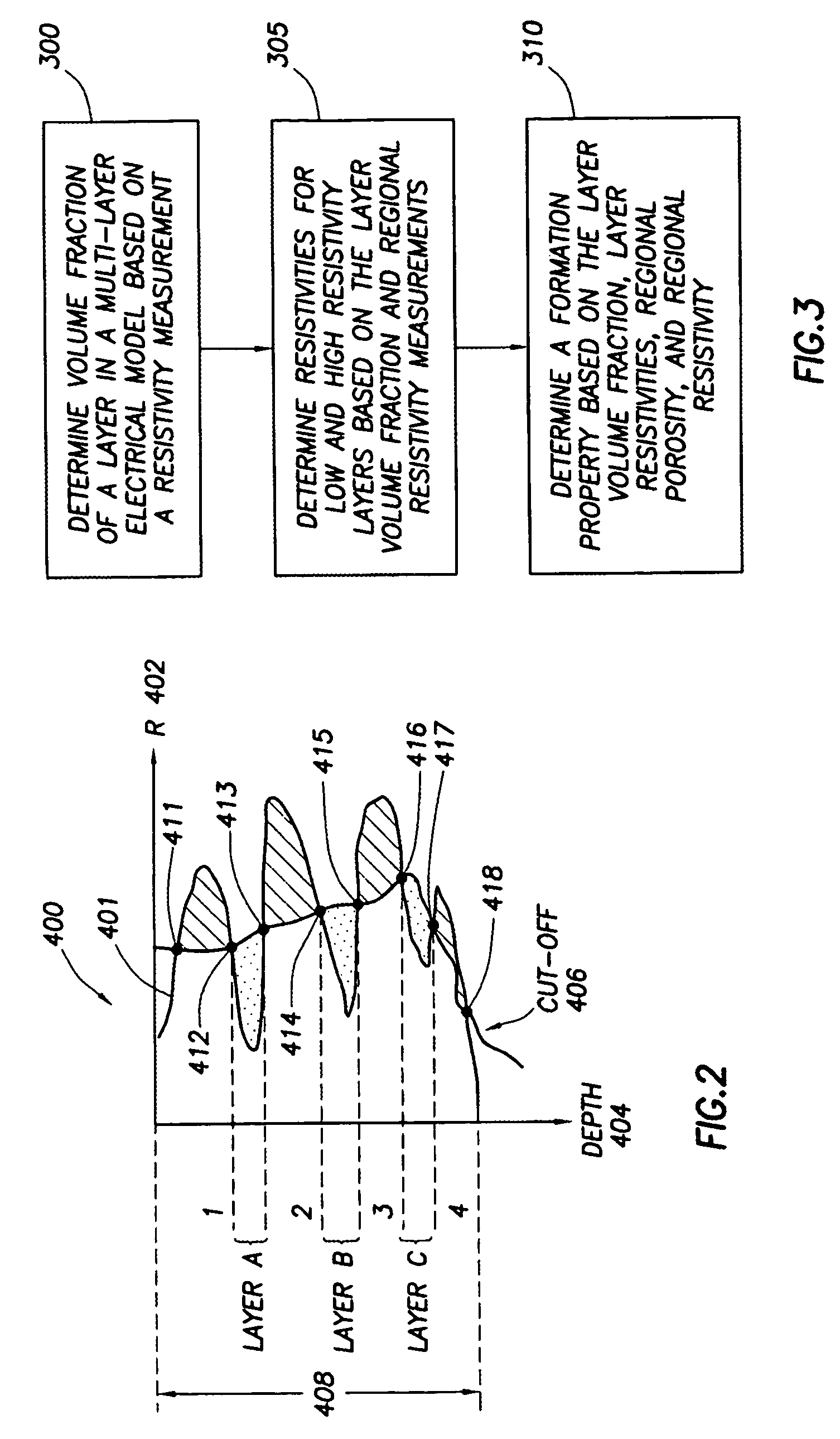Methods and systems for resistivity anisotropy formation analysis
a resistivity anisotropy and formation analysis technology, applied in the field of under ground earth formation analysis, can solve the problems of low resistivity pay, formation resistivity anisotropy presents a problem in formation evaluation, and it is difficult to relate the measured resistivities
- Summary
- Abstract
- Description
- Claims
- Application Information
AI Technical Summary
Benefits of technology
Problems solved by technology
Method used
Image
Examples
Embodiment Construction
[0027]Embodiments of the invention relate to general methods and systems for determining a formation property such as a total water saturation (Swt) from bulk resistivity measurements (Rv and Rh) in anisotropic formations. The total water saturation (Swt) together with the total porosity (φT) may then be used to determine the bulk hydrocarbon volume (BVH). The disclosed techniques use formation models having layers with different electrical properties. These formation models are referred to as “electrical models,” as opposed to the geological models of known techniques. The term “electrical” is used to indicate that the formation model corresponds to the electrical characteristics of the formation as opposed to a conventional geological model. Conceptually, the electrical model is based on the inherent electrical properties of the formation regardless of the geological properties. Although the electrical properties of a given layer are dependent on the composition of the formation, ...
PUM
 Login to View More
Login to View More Abstract
Description
Claims
Application Information
 Login to View More
Login to View More - R&D
- Intellectual Property
- Life Sciences
- Materials
- Tech Scout
- Unparalleled Data Quality
- Higher Quality Content
- 60% Fewer Hallucinations
Browse by: Latest US Patents, China's latest patents, Technical Efficacy Thesaurus, Application Domain, Technology Topic, Popular Technical Reports.
© 2025 PatSnap. All rights reserved.Legal|Privacy policy|Modern Slavery Act Transparency Statement|Sitemap|About US| Contact US: help@patsnap.com



